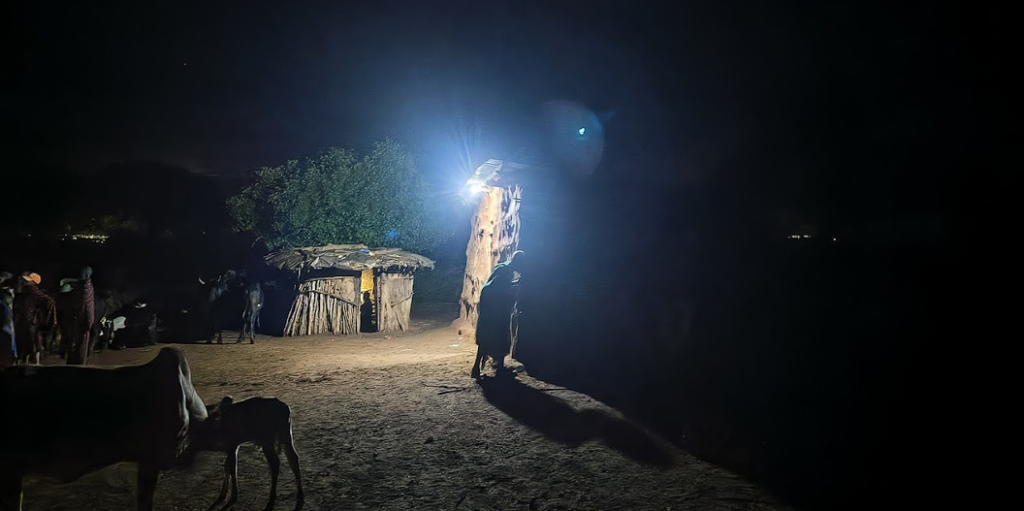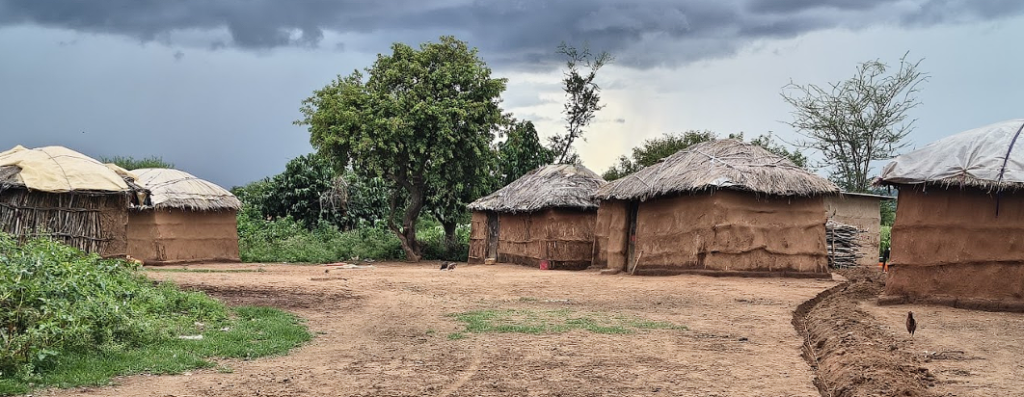Smart Villages was awarded this InnovateUK Energy Catalyst round 10 project in a consortium with our Lesotho partners the National University of Lesotho’s Energy Research Centre and local energy renewable company MOSCET, our Tanzanian partners OMASI, and our Ugandan partners Kiima Foods.

Minigrids are a popular solution for community-wide offgrid electricity access, because they allow the use of productive use equipment with higher electrical loads, at a lower unit cost, than alternatives like solar home systems. Minigrid generation has been falling in cost, with the falling cost of PV and Li-Ion batteries. Electrical distribution (poles and cable), however, is not only disproportionately expensive in any minigrid, but costs are increasing due to the increase in global commodity prices and shipping costs. 1000m of distribution infrastructure can easily cost $10,000. This makes last mile connections to remote households, and the provision of service to very spread out farming communities, very challenging.
Single-wire earth return (SWER) is a technology for energy supply that uses a single conductor, with the neutral connected to earth to form the return half of the electrical circuit. Currently licensed in the US, Canada, South Africa, Mozambique, Laos, Brazil, Australia and New Zealand, SWER is used in these countries for rural grid distribution at high voltage (9-20kV, -100kW lines).
Minigrid-connected rural households typically use <100W of power, a level at which is simply uneconomic to run connections to houses that are too far away from minigrid lines and generating centres. We propose to develop and test a low-voltage (230V) SWER solution to connecting these households to existing minigrids. This would halve the amount of cable used, and also (because of the reduction in weight) allow for support poles to be much further apart. We estimate the cost of a SWER connection could be as low as 30% of the cost of a traditional connection.
Electrical performance (line losses, voltage rises/drops) and user/community safety (step/touch voltages) are clearly concerns in the development of such a system, so we will test these first in a lab setting, before installing experimental connections in communities, and carefully monitoring these over the course of 6 months. We will carry these tests out with local electrically-qualified SME and academic partners, and also involve local regulators to share our research and results with.
From successful outcomes for our feasibility study, we will also run a regulatory dialogue aimed at securing more widespread acceptance of this disruptive alternative to minigrid connections and distribution, in the hope that this will significantly improve the number of minigrid connections and the economic viability of minigrids in providing energy access to offgrid rural communities in the global south.

A typical village in rural Uganda might have 225 houses, consume an average of 0.3kWh per day from a minigrid, and require 8km of distribution infrastructure (poles and cables) to connect all the spread out houses. The village in the UK in which we are based has 1250 houses, consuming (conservatively) 10kWh a day, and requiring just 4km of (identical) distribution infrastructure because of our high housing density. Our electricity tariffs are roughly the same (at $0.20/kWh).
The UK village pays a combined total of just over $900k a year for electricity, which repays the cost of the distribution system within 2 weeks. The households in Uganda pay just under $5000 a year for electricity usage, and will therefore need more than 16 years to repay just the cost of the poles and cables, without even factoring in the cost of the electricity generation itself.
More than anything else, it is the cost of distribution that kills the commercial viability of minigrids, and prevents remote households from being connected to electricity systems in offgrid rural communities in Africa. There has been little to no innovation in distribution to match the significant recent advances in generation and storage technologies and affordability.
Single Wire Earth Return is a promising technology used for high voltage rural connections in the electricity grid in the US, Canada, South Africa, Mozambique, Laos, Brazil, Australia and New Zealand. In this feasibility study we propose to adapt the technology to low voltage (230V) use in last mile connectivity in rural minigrids and test its performance in multiple locations and climate/soil conditions, collecting data to demonstrate its cost effectiveness and safety for users and the community in rural energy access. We estimate the technology could save as much as 70% of the cost of traditional distribution systems.
We will also engage with local regulators and the international energy access community to introduce them to this technology, and encourage its uptake to enable wider energy access in remote communities and households, and lower energy tariffs in these communities.





![[:en]Offgrid Energy Forward Look Workshop[:es]Cambridge Forward Look Workshop[:fr]Cambridge Forward Look Workshop[:]](https://e4sv.org/wp-content/uploads/2015/07/Cambridge.png)

